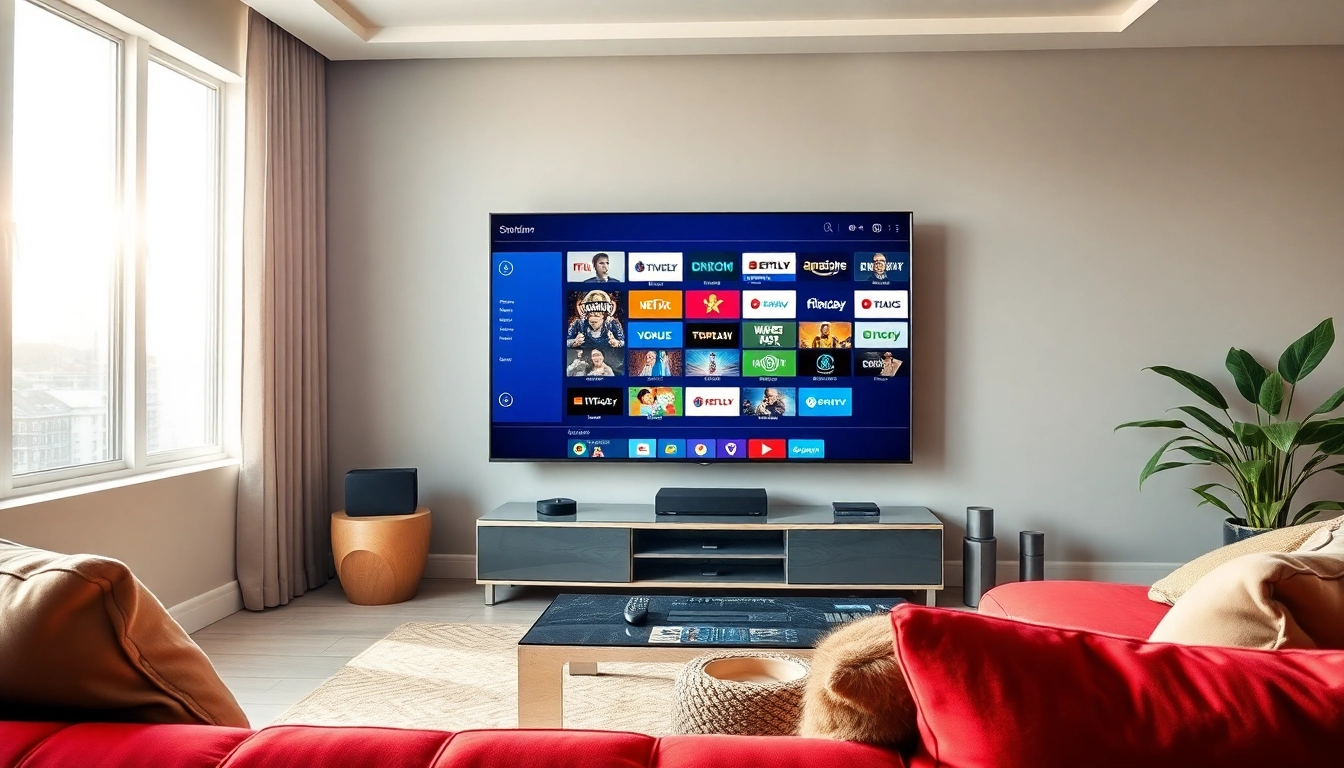Understanding IPTV Test Lines: What You Need to Know
What is an IPTV Test Line?
IPTV, or Internet Protocol Television, refers to a method of delivering television programming through internet protocols instead of traditional terrestrial, satellite, or cable formats. An iptv test line is a crucial tool for potential IPTV subscribers, allowing them to evaluate a service before committing to a purchase. This testing mechanism enables users to experience the service’s quality, channel selection, and overall functionality.
Benefits of Using IPTV Test Lines
IPTV test lines provide several advantages for users exploring different IPTV services. Here are some key benefits:
- Evaluate Quality: Test lines offer a firsthand experience of the video and audio quality, which can vary significantly between providers.
- Channel Variety: Users can explore the variety of available channels, including local, national, and international programming.
- Compatibility Check: A test line helps confirm whether the IPTV service is compatible with your viewing devices such as smart TVs, smartphones, or streaming devices.
- Identify Performance Issues: Users can check for buffering, freezing, or connectivity issues during the trial period, ensuring they select a service that performs well under their typical internet conditions.
How to Choose the Right Test Line for Your Needs
Choosing the right IPTV test line is crucial for an informed decision on which service to subscribe to. Here are some factors to consider:
- Service Reputation: Look for providers with positive reviews and established credibility in the IPTV community.
- Trial Length: Some provider test lines are offered for longer durations, allowing more time to evaluate the service.
- Type of Content: Ensure that the test line offers access to the channels and content types you’re interested in—such as sports, movies, or regional channels.
- User Experience: Evaluate the ease of setting up and using the IPTV interface. A user-friendly app or interface can greatly enhance your viewing experience.
Where to Find the Best IPTV Test Lines
Top Providers Offering Reliable Test Lines
Several reputable IPTV providers offer test lines to help potential customers evaluate their services. Some notable names include:
- StreamHut: Known for its extensive collection of channels and a robust free trial option.
- Kemo IPTV Shop: Offers a variety of packages, including a no-obligation test line.
- IPTV Farm: Provides up to 24 hours of free testing with complete access to services across multiple devices.
- PROTOIPTV: Their structured trial process includes instructions for setup and testing.
Comparing Free and Paid IPTV Test Lines
When considering IPTV test lines, users must compare the benefits and drawbacks of free versus paid options:
- Free Test Lines: Generally have limitations on channels, viewing time, or quality. However, they are an excellent option for initial testing without financial commitment.
- Paid Test Lines: Often offer full access to a broader range of channels, better quality, and extended testing periods but require upfront payment.
Consumer Reviews and Feedback on IPTV Test Lines
Feedback from other users can significantly influence your choice. It’s advisable to check community forums, social media groups, and dedicated IPTV review sites to gather opinions. Here, you can find insights into:
- Performance consistency
- Customer service quality
- Channel accuracy and availability
- User experiences with setup and usability issues
Setting Up Your IPTV Test Line: A Step-by-Step Guide
How to Configure Your Device for IPTV
Setting up your IPTV test line correctly is crucial to a smooth viewing experience. Follow these general steps to configure your device:
- Choose Your Device: Confirm compatibility with your device—this could be a smart TV, streaming device, or mobile phone.
- Install the Required App: Download the IPTV application recommended by your service provider.
- Enter the Test Line: Input the test line details provided by the service, which generally includes the username, password, and server URL.
- Verify Connection: Once entered, check your connection to be sure the test line is activated. This may involve resuming or restarting the app.
Common Troubleshooting Tips for IPTV Services
During your test period, you might encounter issues. Here are some common problems and troubleshooting tips:
- Buffering: If you experience frequent buffering, consider checking your internet speed or reducing other network traffic.
- Connection Failures: Ensure that your internet connection is stable. Testing on different devices may help identify the issue.
- Incomplete Channel List: Occasionally, channels may not load due to server issues. Re-entering the test line details or checking provider updates can resolve this.
Ensuring Optimal Performance During Your Trial
To make the most out of your IPTV test line:
- Test during different times of day to assess peak usage vs off-peak performance.
- Use a wired connection if possible to reduce latency and improve streaming quality.
- Keep the IPTV app updated to the latest version to benefit from performance improvements and bug fixes.
Maximizing Value: Transitioning from Test Lines to Subscriptions
Analyzing Your Viewing Habits and Preferences
After assessing varying IPTV options through test lines, it’s important to evaluate your viewing habits:
- Frequency of Use: Identify how often you watch TV and what content you typically prefer (e.g., sports, movies, series).
- Family Preferences: In homes with multiple viewers, consider the varied interests of all family members.
- Device Usage: Determine which devices are primarily used for viewing—this might affect your choice of service compatibility.
Choosing the Right Subscription Plan for Long-Term Use
Your trial experience should inform your final decision on which subscription plan to purchase. Here are a few tips:
- Compare channels included in different plans against your viewing preferences.
- Look into contract flexibility—avoid long-term contracts unless you’re confident in the service quality.
- Assess additional features such as catch-up TV, recording capabilities, and simultaneous streaming on different devices.
What to Look Out for in IPTV Contracts and Terms
Before finalizing your subscription, carefully read the terms of service to avoid surprises and understand your rights:
- Check for any hidden fees such as connection fees or monthly charges that might not be immediately evident.
- Learn about the cancellation policy and whether you can get refunds for unused service days.
- Verify if the provider has a history of reliability in content delivery and customer support.
The Future of IPTV Services: Trends to Watch
Emerging Technologies in IPTV Streaming
The IPTV landscape is continually evolving with advancements in streaming technology and codecs, which enhance video quality while reducing bandwidth usage. Key trends to monitor include:
- 4K Streaming: More providers are beginning to offer 4K content as technology becomes standardized.
- AI Integration: Artificial intelligence is being employed in personalized viewing suggestions based on viewer habits.
- Enhanced Security: With rising concerns over content piracy, providers are investing in better DRM solutions.
Impact of 5G on IPTV Viewing Experiences
The rollout of 5G technology is expected to significantly enhance IPTV viewing experiences with greater bandwidth, allowing for smoother and higher-quality streaming even on mobile devices. The implications include:
- Improved mobile streaming capabilities, enabling IPTV services on-the-go without interruptions.
- Possibility of augmented and virtual reality content integration in IPTV offerings.
- Lower latency leading to instantaneous streaming, thus enhancing real-time broadcasts such as live sports.
Predictions for IPTV Growth and Consumer Adoption
The future of IPTV looks promising, with a projected increase in both subscribers and content offerings. Trends to anticipate include:
- Increased competition driving down prices and enhancing service quality.
- Further diversification of content offerings, catering to niche markets and interests.
- A shift towards bundling IPTV services with other internet services, providing more value to consumers.



